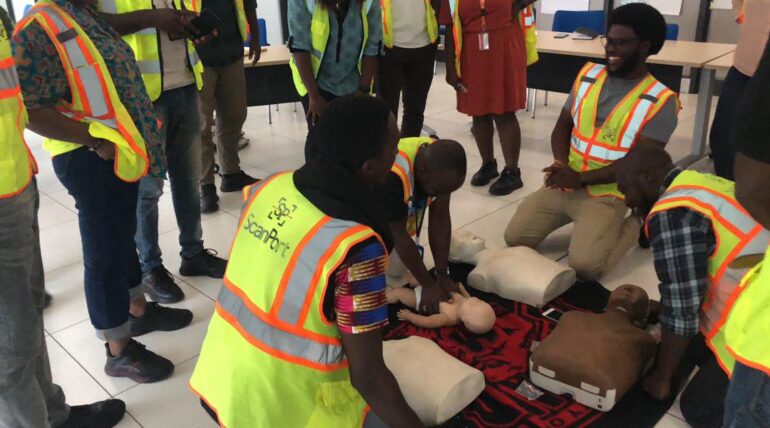
First aid is a critical skill that everyone should possess. In moments of crisis, the ability to administer first aid can be the difference between life and death, turning a dire situation into a manageable one. Whether it’s a minor injury or a life-threatening emergency, first aid offers immediate, often life-saving support before professional medical help arrives.
What is First Aid?
First aid refers to the initial care provided to someone who has sustained an injury or is in distress due to a medical condition. This care is typically administered at the scene, using minimal equipment, and is designed to stabilize the individual until more advanced help can be obtained. It’s not a substitute for professional medical treatment but serves as a critical bridge until such care is available.
The Core Principles of First Aid: ABC
One of the fundamental concepts in first aid is the ABCs—Airway, Breathing, and Circulation. These steps are prioritized to ensure the most critical life-saving actions are taken first:
Airway: The first priority in first aid is ensuring that the airway is clear. An obstructed airway can quickly lead to unconsciousness and death if not addressed promptly.
Breathing: Once the airway is open, the next step is to check if the person is breathing. If they are not, rescue breaths may be necessary to provide oxygen.
Circulation: If the person is not breathing, chest compressions are needed to maintain circulation and keep blood flowing to vital organs.
In some cases, severe bleeding or the need for defibrillation (especially in cases of cardiac arrest) might be considered an additional step, integrated into the circulation phase.
The Goals of First Aid
First aid has three primary goals:
- Preserve Life: The most immediate goal is to keep the person alive. This involves maintaining the airway, ensuring breathing, and promoting circulation until help arrives.
- Prevent Further Harm: First aid aims to prevent the situation from worsening. This could involve moving the person away from further danger, applying pressure to wounds, or immobilizing injured limbs.
- Promote Recovery: While immediate survival is the focus, first aid also takes steps to support the body’s recovery processes. This might include cleaning wounds, applying bandages, or positioning the person in a way that aids their condition.
The Recovery Position
If a person is unconscious but breathing, placing them in the recovery position is essential. This position helps keep the airway open and reduces the risk of choking if the person vomits. Here’s how to position someone in the recovery position:
- Remove any glasses and kneel beside the person.
- Position the arm closest to you at a right angle to their body.
- Bring the opposite arm across the chest and place the back of their hand against their cheek.
Lift the far leg by the - knee, ensuring the foot is flat on the ground.
- Gently pull on the knee to roll the person onto their side towards you.
- Tilt the head back slightly to ensure the airway remains open.
Cardiopulmonary Resuscitation (CPR)
CPR is a vital first aid technique used when someone is not breathing or their heart has stopped beating. It involves chest compressions and rescue breaths to keep oxygenated blood circulating through the body. While CPR may not restart the heart, it can extend the critical window for successful resuscitation by maintaining blood flow to the brain and other vital organs.
To perform CPR:
- Kneel beside the person, who should be lying flat on their back.
- Place the heel of one hand in the center of their chest, with your other hand on top.
- Interlace your fingers, keeping your elbows straight, and press down firmly to compress the chest about 2 inches for adults.
- Perform 30 chest compressions at a rate of 100 beats per minute.
After 30 compressions, give two rescue breaths by tilting the head back, pinching the nose, and breathing into their mouth until you see the chest rise. - Repeat the cycle of 30 compressions and two breaths until the person shows signs of life or medical help arrives.
Why First Aid Matters
In emergencies, every second counts. Having basic first aid knowledge empowers you to take action confidently and effectively. Whether you’re at home, at work, or in public, the ability to provide first aid can save lives and prevent injuries from becoming more severe.
Furthermore, first aid training can reduce the stress and anxiety that often accompany emergency situations. Knowing what to do—and being prepared to do it—helps you stay calm, think clearly, and act quickly.
Conclusion
First aid is a skill set that everyone should learn. By understanding and practicing basic techniques, you can be prepared to act in emergencies, potentially saving lives and reducing the severity of injuries. Whether you’re helping a loved one, a colleague, or a stranger, first aid is an invaluable tool that can make a profound difference when it matters most.
Consider enrolling in a first aid course to deepen your knowledge and ensure you’re ready to help when the need arises. In doing so, you’ll be taking an important step toward making your community a safer place for everyone.




